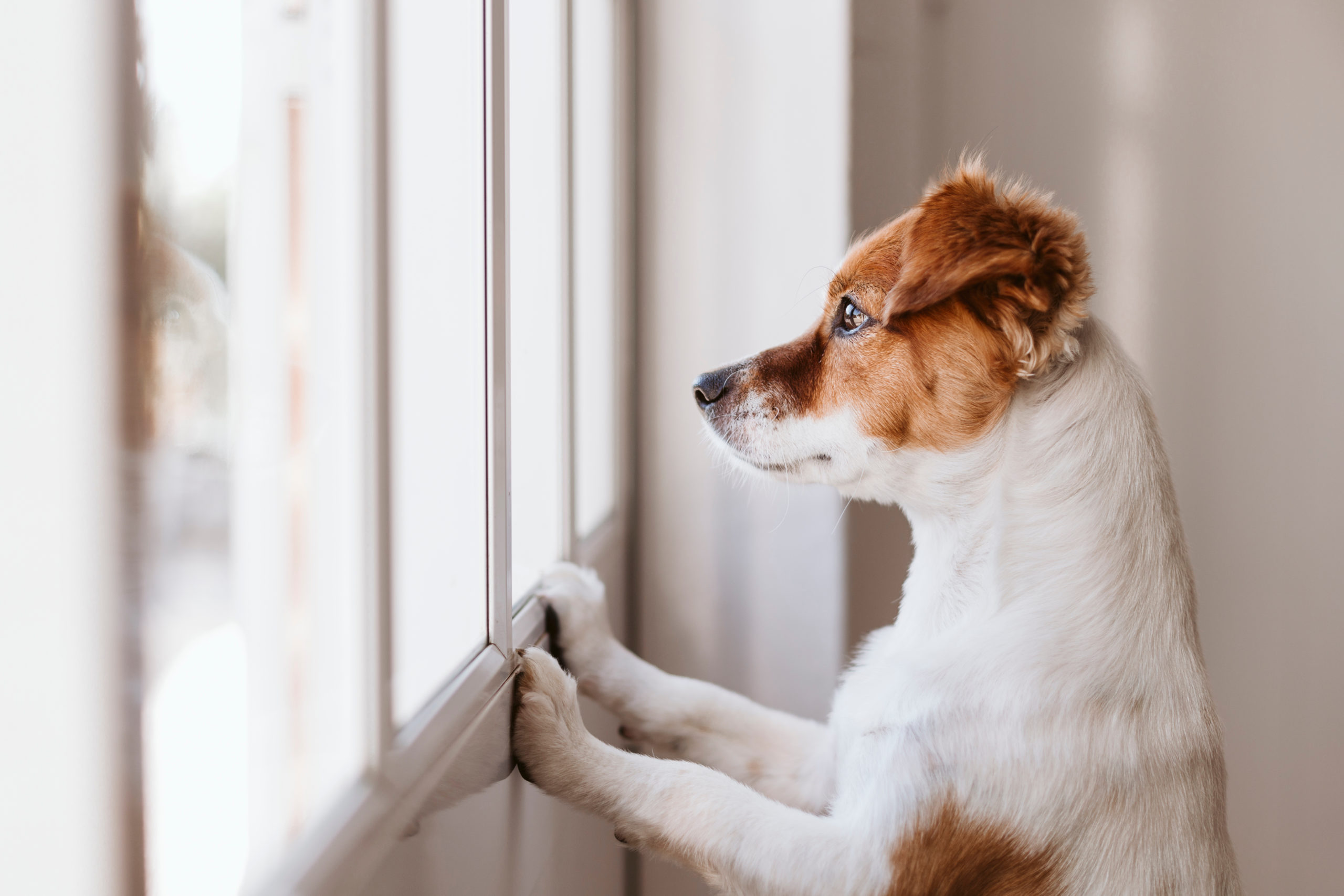What is Isolation Distress (Separation Anxiety)?
Dogs who suffer from Separation Anxiety (Isolation Distress) are having a true panic attack. They become panicked and uncontrollably anxious when left home alone. Owners may feel that their dog just needs to “get a grip,” but for dogs suffering from Separation Anxiety the panic is real, causing mild to intense distress when left home alone.

No other behavioral issue has the impact that canine separation anxiety has on dogs and their people. Separation Anxiety is a devastating condition that affects 15% of the 70 million dogs in the United States. People who live with and love dogs suffering from Separation Anxiety often feel trapped in their own home, or guilty knowing their dog is suffering when left home alone. Living with a dog who suffers from Separation Anxiety may seem hopeless, but it is not. I can help these dogs find peace of mind.
Signs of Separation Anxiety
Signs of Separation Anxiety can vary from one dog to another. Some dogs may display minimal signs of Separation Anxiety, and others may be completely out of control with panic and display multiple signs. Common behaviors associated with Separation Anxiety are:
- Vocalization that can begin before you leave, while you are leaving or after you’ve been gone for a while. It can be chronic and non-stop or occur in a cyclic pattern. For example: a repeated pattern of howl – bark – howl – whine (each pattern may be followed by a period of silence).
- House soiling in dogs that are normally house trained
- Chewing or pawing with destruction
- Self-mutilation
- Escape behaviors such as chewing or scratching at doorways and windows, breaking out of crates/kennels.
- Drooling
- Panting
- Sweaty paws
- Pacing around the house or from window to window, often in an attempt to find their person.
- Excessive water consumption (upon return home)
- Trembling prior to departure
- Excessive greeting behavior (upon return home)
- Anorexia (lack of interest in food/eating)
- Aggression (upon leaving and/or returning home)
- Depression
- Excessive shedding
Remote Training Works Best
Separation Anxiety is best treated remotely. When helping dogs overcome Separation Anxiety the goal is to get the people out of the house. By using technology like Skype or Zoom, I will be able to accomplish much more than if I were to come to a client’s home in person. Remote training will allow me to be right there with the client via live camera to observe their dog in real time. This will allow me to give a customized daily training plans that fit each dog’s individual and progressing training needs. This process accentuates progress. Don’t worry if a client is not tech savvy; it’s easy and I can help clients every step of the way. Remote training makes it possible for me to work with clients across the country without compromising progress.
Why Use a Certified Separation Anxiety Trainer (CSAT)?
As a Certified Separation Anxiety Trainer (CSAT) I have completed over 100 hours of intense study in the causes and rehabilitation of Separation Anxiety, and science supported, rehabilitation of Separation Anxiety. My knowledge and abilities as a CSAT have been tested and accredited. As a Certified Separation Anxiety Trainer, I have the knowledge, experience and compassion to help dogs learn to be calm, self-controlled and anxiety-free when left home alone. Using science-supported, gentle training methods that build ability and trust, I have helped countless dogs throughout the USA find peace and comfort in being home alone.
